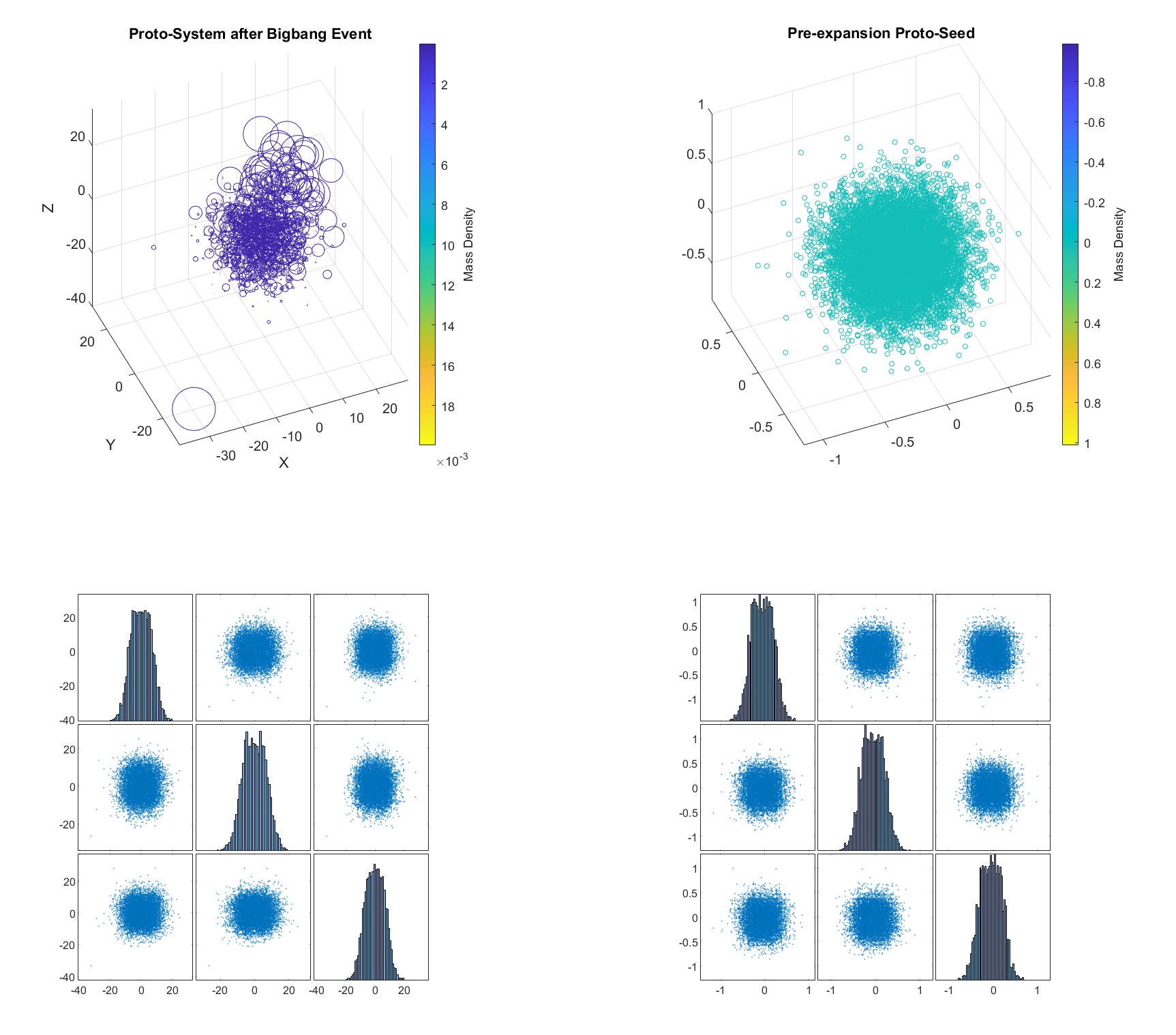Blackhole-Bigbang Theory
Primordial matter ejected from Bigbang event followed tangent vector with spacetime expansion most efficient; resulting in head-tail formation that led to circumstellar flat-disk systems.
Graphical Demonstration
Demo Bigbang expansion event of one system consisting of 10 thousand primordial seed clouds started out as a Poisson Distribution first order cloud normalized with total system mass of 182 (Solar mass). Noted head-tail formation of primordial clouds stretched out by rapid spacetime expansion.
Primordial seeds histogram of Post- and Pre- Bigbang event of demo system by 10-thousand seed simulation.

Blackhole-Bigbang Theory – Background
Download Theory Background Demo (PDF)
I. Blackhole Collapse
- Given two same mass and velocity but different angle of approach (tangent vector) are being swallowed by a blackhole
- One with most tangent vector (angle) would collapse into blackhole last.
II. Spacetime Collapse using Blackhole Model
- Under the same initial condition, a spacetime collapsed causes by blackhole.
- Spacetime collapsed using the same method.
III. Inverse of Blackhole Collapse
- Inversion of blackhole time lapse as time reversed playback of above method.
IV. Actual Blackhole Expansion
- Actual method of blackhole expansion.
- A tangent vector mass would be ejected first.
- Blackhole gravitational force decreases as mass receeded from its center.
- This model demonstrates initial mass ejected by their time inversed.
V. Actual Blackhole Expansion – Simultaneous Ejection
- This model demonstrates initial mass ejected simultaneous at the same time epoch.
VI. Blackhole-Bigbang Expansion Model
- Mass ejection model included space expansion adjusted by Bigbang expansion curve.
- Timelapse with mass-area adjusted for spacetime inflation.
VI. Blackhole-Bigbang Expansion Model by Simultaneous Ejection Time
- Bigbang expansion timelapse with simultaneous ejection.
Back to Blackhole-Bigbang Project Page
